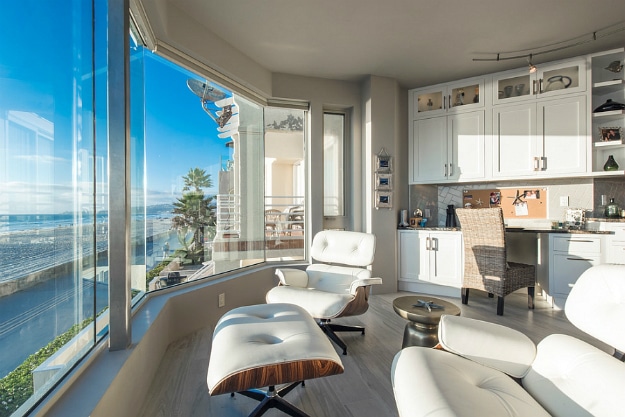A home office is a place for concentration and, beyond any regular meetings, seclusion, and peace of mind. This means the layout and decor must serve both requirements. It should be practical, of course, but also fit in with other features and aspects of your household. In that respect, it’s desirable to make it tasteful as well as useful.
As such, here are a few thoughts on what makes a well-functioning yet fabulous home office.
1. The Home Office Footprint
As home office spaces can differ enormously in terms of available space, the first thing to think about is the type of flooring that’s likely to work best. Carpets provide warmth and deaden sound, which is useful if there’s a need to minimize heating costs and create a haven in an environment that gets noisy at times, such as when your children arrive home from school.
However, carpets can make it difficult to ensure workstations are mobile and office layouts flexible, and they require regular care and maintenance to keep them smart and clean.
Hard flooring is easier to deal with, whether wooden or laminated floorboards or tiling. Office chairs, filing cabinets, and desks can be more easily moved on a hard floor, meaning more flexibility in terms of layout. This is particularly useful if the available space is limited and soundproofing isn’t required.
2. Wall To Wall
Decor is all-important, and there are plenty of style guides available that advise what colors are best for an office space. For example, if the aim is to aid concentration, neutral tones are generally recommended. Even on tabletops from companies such as Cut My Plastic or any other company that you trust.
If the office space needs to energize, then decorate with yellow or orange, as these colors stimulate creativity and encourage the brain to work well. If your office needs a calming aura, cooler shades, such as blue and green, are advised.
3. Illuminating Facts
After considering flooring and colors, consider how much natural light your home office gets; there are a considerable number of studies that suggest people prefer a natural light to artificial light, and perform better in natural light. In fact, this research has found that lack of ‘light vitamin’ over a prolonged period can cause health problems. These are likely to include minor sleep disorders and performance difficulties, but also severe depression.
As such, natural daylight in the home office should be maximized. One way of doing this is to replace blinds and drapes with window shutters that are maneuverable, allowing you to control and filter light and noise, as well as protect privacy. Take advantage of, for example, free shutter samples to get an idea of the innovative and stylish designs, colors, and finishes on offer.
4. Furniture
When it comes to furniture, the office chair is probably the most important investment you will make. [pullquote]An ergonomic chair will keep you comfortable, enabling you to better cope with demanding schedules or awkward customers.[/pullquote] Desks should be at a height that enables you to work without straining your back or eyes, whether using a laptop, tablet or good old pen and paper.
In conjunction with your main lighting, task lighting will help you with the performance of specific tasks, such as reading, writing or working using a screen; make use of recessed and track lighting, as well as pendant lighting and desk lamps.
Storage is just as much an issue in the office as it is in the home; use home office storage, such as desktop organizers, filing cabinets and media storage drawers and boxes, to reduce clutter.
5. Equipment
As efficiency and access to resources are critical to a successful home office, think about where essential equipment should go and how you will use it. Don’t pay for equipment you’re unlikely to use on a regular basis, as there’s no point in clogging up space with kit that you seldom require. You should also look out for equipment that performs several functions, enabling you to save space, such as all-in-one printers, which copy and scan, as well as print.
A wireless router will allow you to work using your smartphone, tablet, and laptop from your office desk, living room, and kitchen. Being able to have a change of scenery can enhance your ability to think clearly and solve problems.
A separate home office phone line is a good idea, as it means colleagues and clients will be able to get in touch without the risk of your family answering the phone or stopping them from getting through. Additional functions such as conference calling, voice messaging and speakerphone are worth considering when it comes to choosing a telephone.
6. A Room With A View
Although the location of a home office is likely to be dictated by what space you have available, it’s worth giving some thought to what lies beyond it. A peaceful garden or park view is likely to be more conducive to your work than a busy city street; it’s easier to both concentrate and handle pressure when you have a calming view.
If you have little option as to where your home office is located due to how the rest of your home is configured, aim to make the most of the situation outside your window; consider planting brightly-colored flowers in a window box, or adjusting your shutters to block out passing traffic while retaining a view of the sky above.
By decorating your home office appropriately, and ensuring it’s smartly laid out, you can not only ensure productivity but achieve a tasteful look in harmony with the rest of the home.

COMMENTS